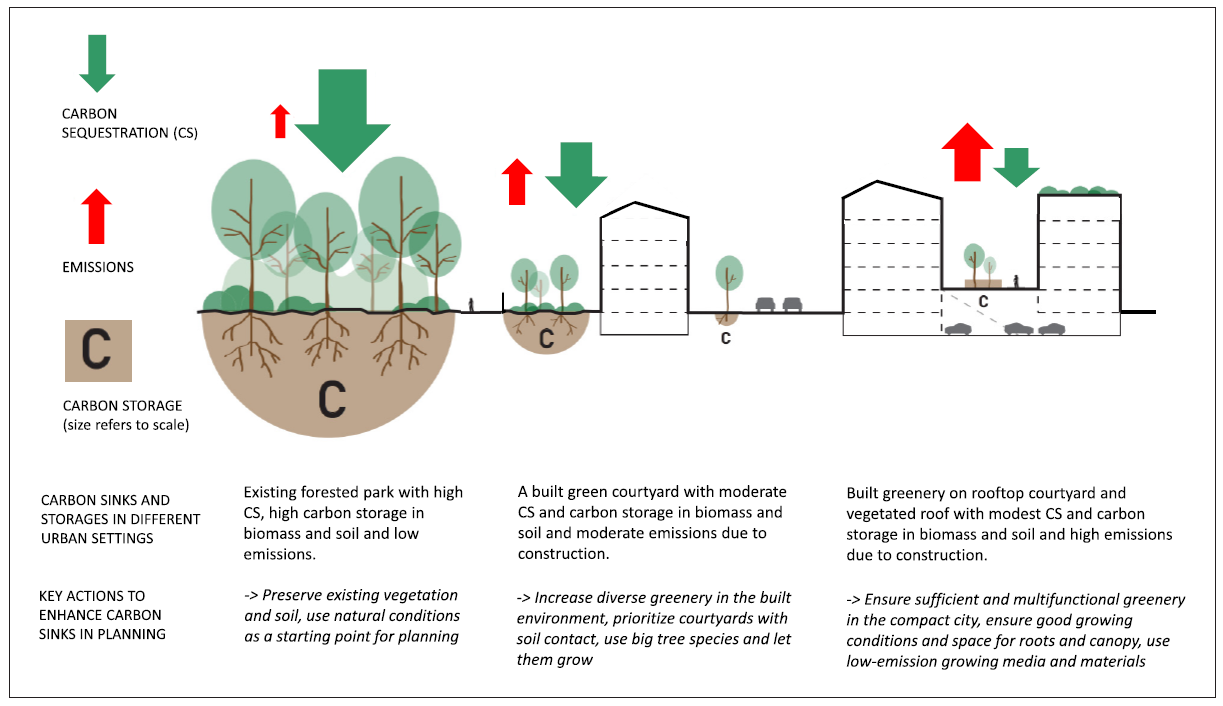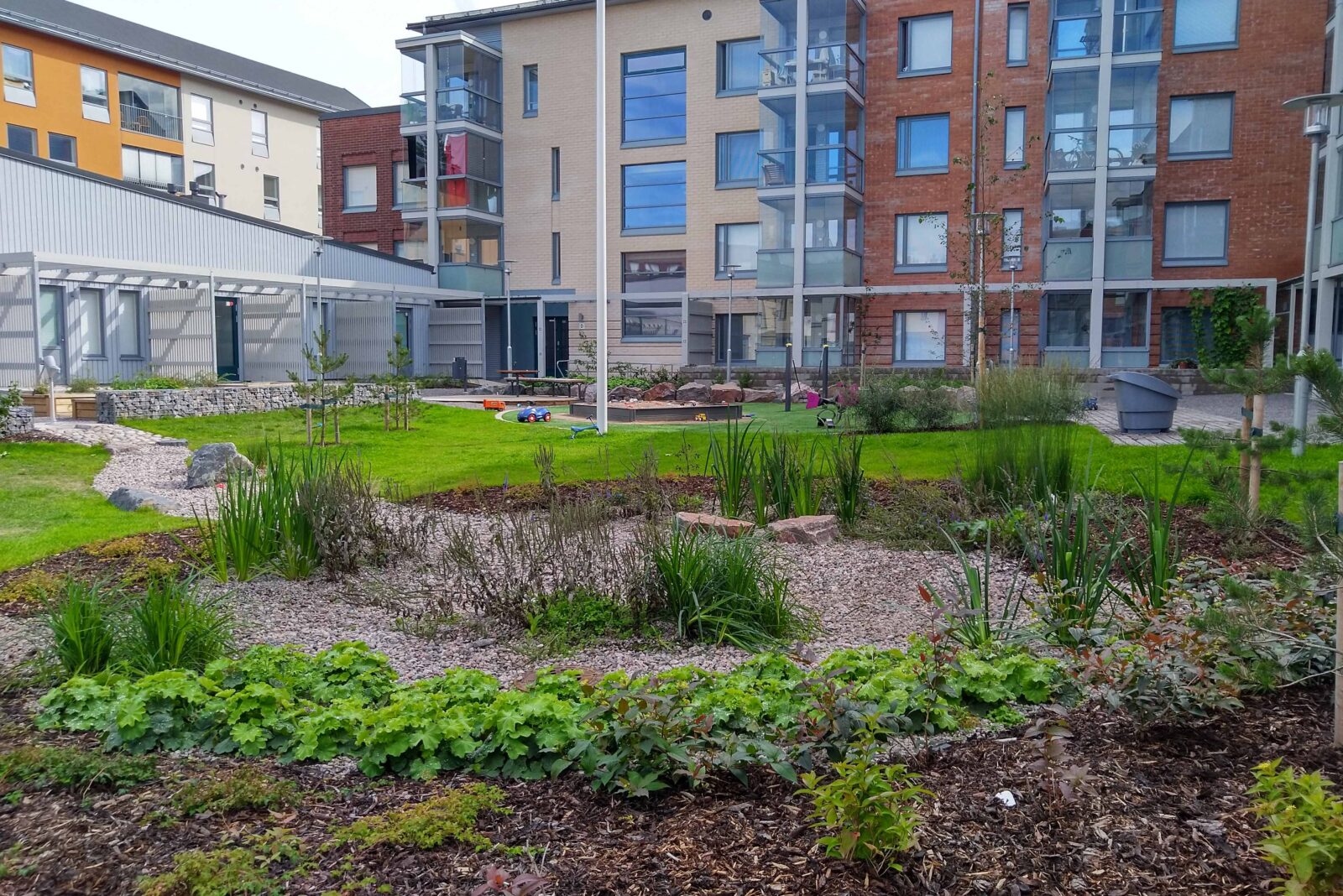Enhancement of carbon sinks is important for reaching the carbon-neutrality targets of cities. Urban green infrastructure (UGI) is a cost-effective sink that provides numerous co-benefits beyond carbon sequestration.
A new article published in the journal Buildings and Cities by Ranja Hautamäki, Liisa Kulmala, Mari Ariluoma, and Leena Järvi provides evidence-based recommendations to integrate UGI more fully into climate actions. These include preservation of existing carbon storage in urban planning, creation of new multifunctional sinks, and adopting low-emission practices in the construction and management of UGI.
The article provides also action points from city-scale policies to the planning and implementation of neighbourhoods, plots, parks and street plantings. Promoting carbon-smart UGI requires collaboration between urban planners, architects, landscape architects, private-sector developers, constructors, and landscape managers.

Different types of urban green infrastructure (UGI) have different carbon sequestration and storage (CSS) capacities and emission rates and require different methods to enhance carbon sinks. Highlighted are the carbon fluxes and key CSS actions in an existing forest, a courtyard with soil-based greening and built greening on rooftop courtyards. Source: Hautamäki (2025).
Starting photo: Mari Ariluoma
